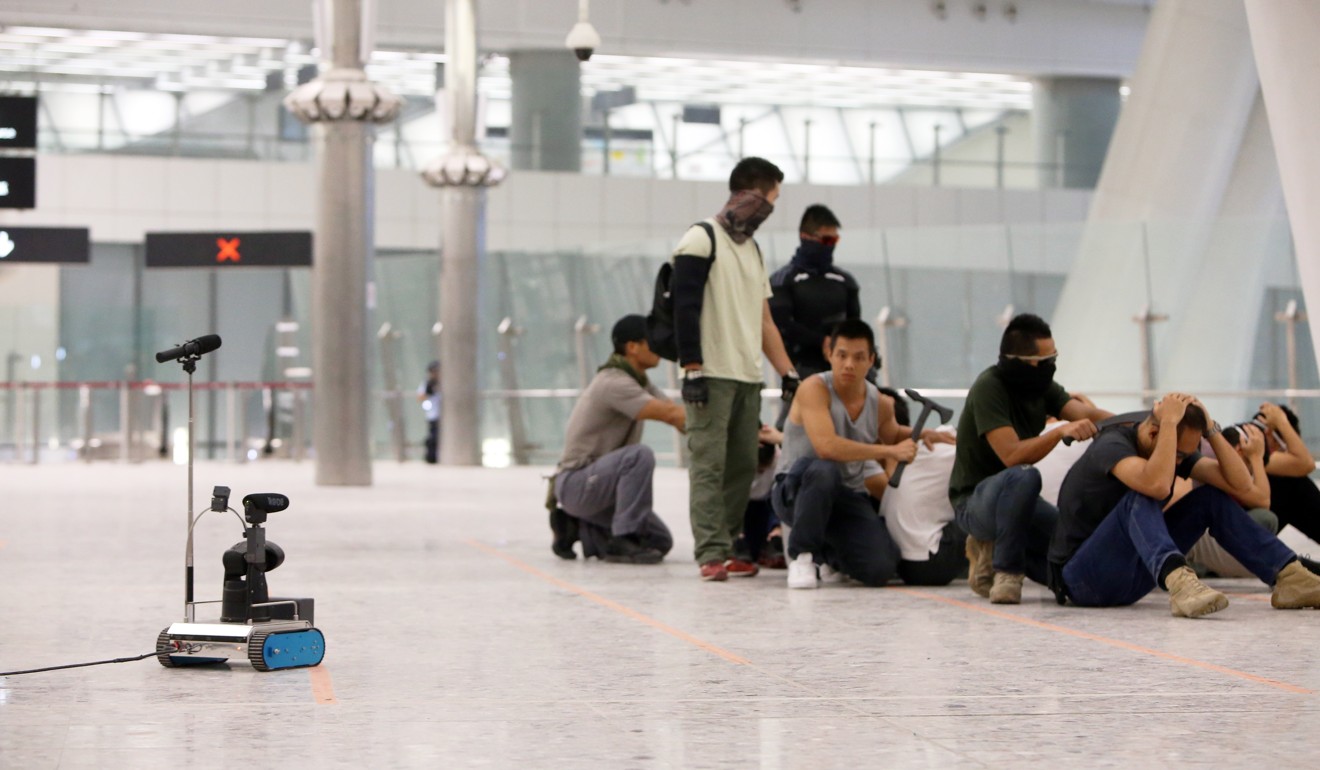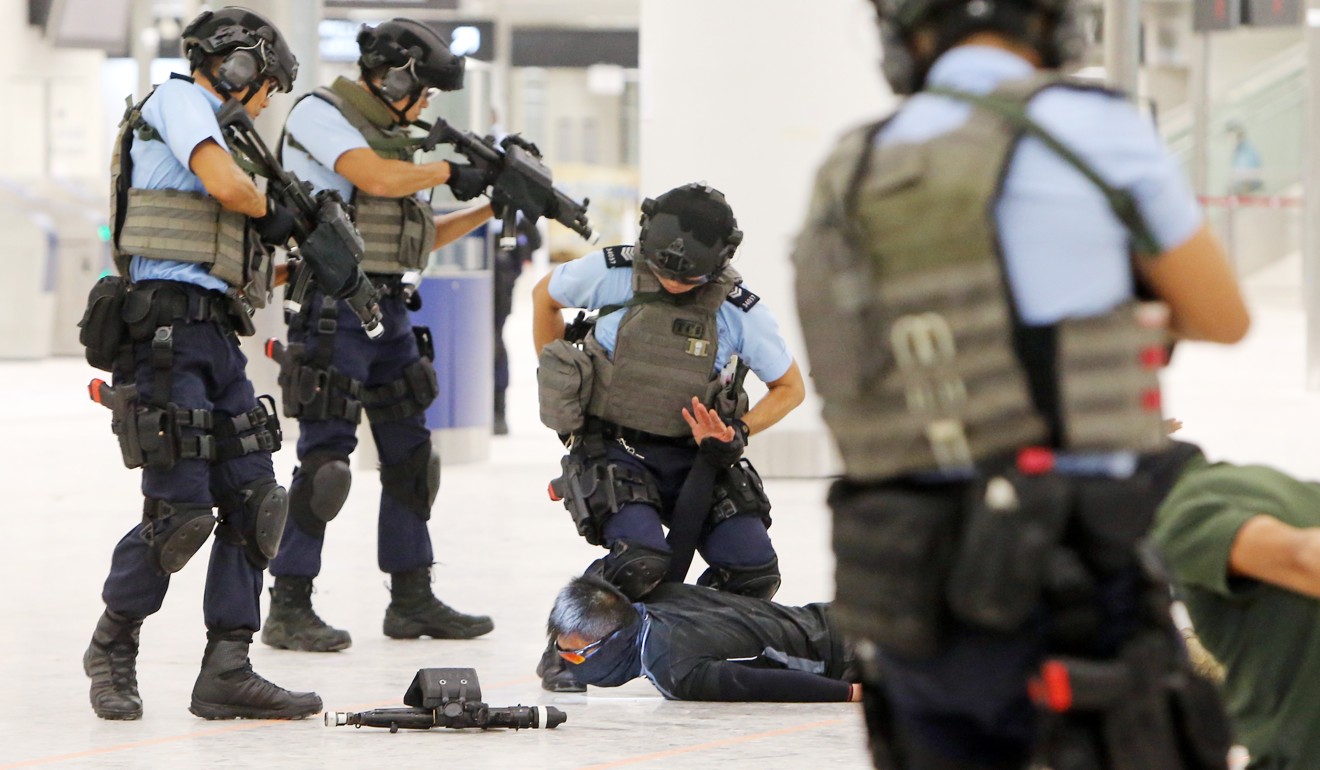
Armed Hong Kong police hold large anti-terrorism drill at high-speed rail link to mainland China
Joint checkpoint faces higher risk of terrorist attacks as major transport infrastructure and landmarks around the world are potential targets, police say
The police said the joint checkpoint, or so-called co-location plan, on the HK$84.4 billion (US$10.8 billion) link faced a higher risk of terrorist attacks as major transport infrastructure and landmarks around the world were potential targets.
The government was at the final stages of finalising a collaborative emergency plan with mainland Chinese authorities and the force would in future conduct joint exercises because terrorists would not respect the different boundaries within the local terminus of the Guangzhou-Shenzhen-Hong Kong Express Rail Link, police said.

“Boundaries are meaningless in their eyes. But Hong Kong police will consider the matter carefully when outlining our counterterrorism and emergency response plans,” said John Tse Chun-chung, the head of the force’s public relations branch.
Hong Kong’s high-speed rail link opens in two months – but the roof leaks
“Both sides have reached a basic consensus on the mechanism for handling emergencies. Relevant departments and the [rail firm] MTR are drafting contingency plans.”
The chief superintendent added that under the cooperation arrangement for the co-location plan announced in December, mainland authorities could request and authorise Hong Kong police to enter the mainland port area to deal with emergencies if necessary.
The 26km Hong Kong section of the link has been mired in controversy for years over the joint checkpoint at the Hong Kong end, under which mainland officials will unprecedentedly exercise almost full jurisdiction in part of the terminal on Hong Kong soil.
The mainland immigration counters on the terminus’ departures level, the platforms and compartments on moving trains in Hong Kong all fall under mainland jurisdiction.
“The railway systems in mainland China and other countries have become targets for terrorists armed with knives, guns and bombs. Terrorist organisations have also incited their supporters to carry out lone-wolf attacks at railway systems in order to cause mass casualties,” Tse said, adding that the drill on Saturday could test contingency response capabilities and cooperation between departments.

Hong Kong’s security minister John Lee Ka-chiu expressed similar concerns about terrorism in the Legislative Council in May, saying the threat faced by the mainland was far higher than that for Hong Kong as the country had suffered from attacks in the past.
In December 2016, four Islamic militants drove a car into Communist Party offices in Xinjiang and set off explosives, killing one person while all four of the assailants were shot dead.
Explained: Hong Kong’s joint rail checkpoint arrangement
The force’s Counter Terrorism Response Unit and Explosive Ordnance Disposal Bureau were among the squads put into action on Saturday to gauge their readiness for a terrorist attack.
For the drill, a group of six “terrorists” first rammed a truck into a crowd of people queuing at the taxi stand. The group then entered the ticket hall at the B1 level, which falls under the Hong Kong port area, and attacked about 400 travellers, portrayed by disciplined services officers. Some were taken hostage.

While police negotiators were trying to secure their release, several hostages attempted to flee, prompting the terrorists to open fire on them.
Anti-terrorism officers, armed with machine guns, arrived at the scene and subdued and arrested the group. A police dog was also deployed to subdue a fleeing terrorist carrying a knife.
As explosives were reportedly found at the scene, bomb disposal officers showcased a new robot that examined the devices. They were later confirmed to be non-explosive.
The force has conducted 12 counterterrorism exercises so far this year, compared with 21 in 2017.
Tse stressed there was no intelligence to suggest that Hong Kong was specifically targeted for attack, and that the terrorism threat level remained “moderate”.

